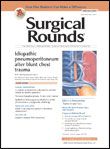Factors that Contribute to Deep Infection in Shoulder Replacement Surgery
Although shoulder replacement is less common than hip or knee replacement, aging Baby Boomers are undergoing the surgery at increasing rates, and one of the unintended, challenging consequences is deep infection.

Although shoulder replacement is less common than hip or knee replacement, aging Baby Boomers are undergoing the surgery at increasing rates, and one of the unintended, challenging consequences is deep infection.
Nevertheless, only a few studies have been conducted to determine whether patient-specific factors can predict deep infection. In addition, the results have been limited by the trials’ narrow scopes or populations.
In a retrospective cohort study published online June 7, 2014, in Clinical Orthopaedics and Related Research, investigators from Kaiser Permanente set out to identify the risk factors for deep infection, as well as create a pathogen profile.
The researchers identified a total of 4,528 patients who underwent shoulder arthroplasty. Of those subjects, 622 either died or were lost to follow-up, leaving 3,906 patients for whom follow-up records for an average of 2.7 years were available.
Overall, the incidence of deep infection requiring revision surgery was quite low, as only 45 infections were reported. Though authors found the risk of infection decreased by 5% with every one-year increase in age, males were 2.59 times more likely to develop deep infection than females, and patients undergoing primary reverse total shoulder arthroplasty had a 6 times greater risk of infection than those undergoing primary unconstrained total shoulder arthroplasty. Traumatic arthroplasties were also associated with approximately 3 times more deep infections than elective procedures.
However, the researchers found no associations between deep infection and body mass index (BMI), race, preoperative physical status reflected by American Society for Anesthesiologists scores, or diabetes.
Although previous research identified Staphylococcus aureaus as the most common pathogen, it did indicate Propionibacterium acnes infections might be underestimated. In the current study, approximately 31% of bacterial isolates grew P. acnes, making it the most common infective agent — a finding the researchers attributed to improved laboratory recognition techniques. Of note, 4 deep infections were caused by methicillin-resistant S. aureaus.
